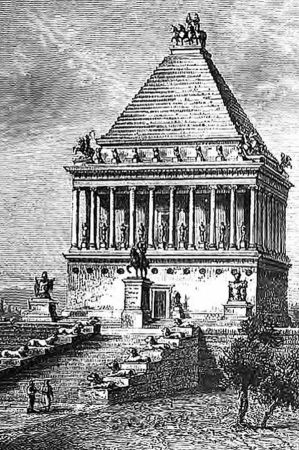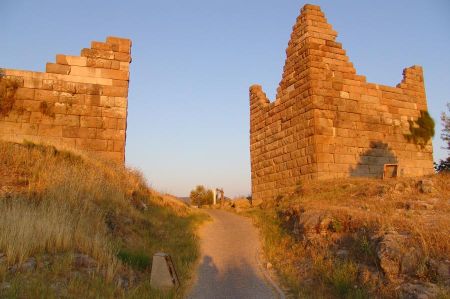Halicarnassus - characters and ancient wonder of the world
- Written by Portal Editor
Ancient writings found in the Greek port city of Pylos, so-called Linear B documents, date from the early 12th century BC.
Among other things, in originate of those the place Zephyria is mentioned, according to the traveler Strabo, Zephyria is the old, original name of Halicarnassus, it is assumed that Zephyros is the Mycenaean name of this Bronze Age settlement in the area of the later Halicarnassus. In other words: As early as the 12th century BC, female slaves were shipped from today's Bodrum to today's small town Pylos, which was even recorded in writing.
Linear script in the Bronze Age Minoan culture
Linear B is the syllabary of the Mycenaean culture of Greece. It was growing from the 15th century BC. until the 12th century BC starting from Knossos on Crete and the Greek mainland. It´s usage is attested from the periods of the Bronze Age Minoan civilization.
About 90 syllable characters, 160 characters with word meanings and various numerals are known. It was written from left to right. The font became known in 1878 through a find in Crete. The designation "Linear B" was coined by Sir Arthur Evans, the excavator of Knossos, and describes the appearance of the characters scratched with individual lines in clay tablets. Because of the close relationship with the linear script A, found on clay tablets and similar finds were initially thought to be Minoan.
Halicarnassus made famous by the mausoleum

Halicarnassus gained fame in classical antiquity by the mausoleum of Halicarnassus, which is counted among the classical seven wonders of the world. His best-known son is Herodotus, the "father of historiography". The poet Heraclitus of Halicarnassus and the historian Dionysius of Halicarnassus also come from this city.
Since the year 480 BC Artemisia I, daughter of Lygdamis, ruled Halicarnassus as guardian of her son Pisindelis, which also included the islands of Kos and Nisyros.
Artemisia - ruler of Halicarnassus
From 392 BC Hekatomnos of Mylasa ruled Caria as a Persian satrap. With him the dynasty of the Hecatomnids was founded, which was continued by all his children. He had three sons, Maussolos, Idrieus and Pixodaros; and two daughters, Artemisia II and Ada. Both were married to their brothers Maussolos and Idrieus, respectively. Maussolos succeeded his father as ruler and made Halicarnassus the capital of his empire instead of the old Mylasa. In addition to a port, which was only accessible by a narrow canal, he had walls and watchtowers built in order to be secured both on land and at sea. A massive palace ensured him a view in all directions.
Fall of Halicarnassus by Alexander the Great
From about 280 BC to 200 BC Halicarnassus belonged to the Ptolemaic Empire.
With the expansion of the Seleucids and the subjugation of the Greek cities of Asia Minor, Rome was called into action. In the war against Antiochus III. Halicarnassus stood on the Roman side and thus retained his independence for several decades.
Since 129 BC BC Halicarnassus belonged to the Roman province of Asia.
Please read as well:
Mausoleum at Halicarnassus - Artemisia & King Maussolos
Myndos Gate to Halicarnassos today Bodrum
